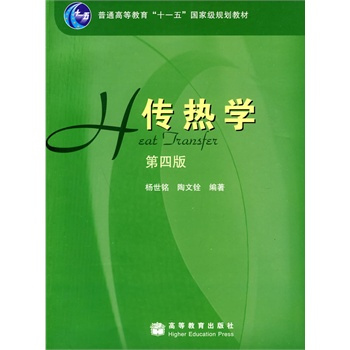
当前课程知识点:Production Engineering > Chapter 9 Acidizing > 9.2 Sandstone Acidizing > 9.2.2 Mud Acid Treatment Design
返回《Production Engineering》慕课在线视频课程列表
返回《Production Engineering》慕课在线视频列表
同学们好
本节我们学习土酸处理设计
首先我们看土酸的组成
土酸是由10%到15%的盐酸
及3%到8%的氢氟酸混合而成的
这个混合的比例
根据岩石矿物的组成不同
是有所不同的
其中获取的原则是
碳酸盐的含量比较高的时候
在土酸中盐酸的浓度要取上限
如果硅酸盐的含量比较高
氢氟酸的浓度呢
就取上限
这要根据具体的油层的情况来做决定
其中有些油田采用的土酸中
氢氟酸的浓度会超过盐酸的浓度
我们称这种土酸为逆土酸
土酸酸化有一定的设计步骤
这几个步骤如下
首先第一步是要选井选层
选井选层的时候我们要选择
井底附近有伤害的井
如何来获取呢
一般是采用试井解释的方法
来获得的
第二就是要进行酸液的配方设计
这个配方的设计
主要是依靠室内评价实验来确定
在这个配方设计中
需要注意的原则
就是要清除伤害不产生二次沉淀
第三要确定施工压力和施工的排量
我们这个地方要强调的是
对于土酸酸化的施工压力
一定要小于地层的破裂压力
要小于多少呢
一般情况之下
要小于1.4到3.5兆帕
为什么施工压力要小于地层的破裂压力呢
我们知道高于地层的破裂压力
在地下就会产生裂缝
如果对于土酸酸化的时候
产生裂缝了
它的问题有两个方面
第一产生的裂缝
可能会使酸液沿着裂缝行进
而没有起到对于井筒周围的区域
进行酸处理的目的
第二个问题就是对于砂岩储层
如果形成裂缝了
跟碳酸岩储层的酸化压裂不同
因为砂岩储层中碳酸盐的含量很少
形成的裂缝不可能形成那种有效支撑的缝
也就是在闭合应力的作用之下呢
这种砂岩储层产生的裂缝
很快的就闭合了
因为这样的一些原因
我们的一个重要原则
就是施工的压力一定要小于地层的破裂压力
第四个方面确定处理的液量
对于土酸酸化来说
有三种类型的处理液
第一叫做前置液
或者叫预冲洗液
第二就是酸化液
第三叫做替置液
也叫后冲洗液
我们先看一下前置液
也就是预冲洗液它的用量
前置液一般采用什么
一般采用的是5%到15%的盐酸
或者是5%到10%的醋酸
这种预冲洗液
它起到的作用呢
就是避免地层里的水
与氢氟酸接触
也就是通过预冲洗液将地层的水
驱离远离井筒的地方
防止氢氟酸与碳酸盐反应
生成沉淀
以提高氢氟酸的酸化效果
其中预冲洗液的用量
我们有两种原则来确定
第一种原则是将地层里的液体
驱替到损害半径的位置
我们的用量是用这个公式来表示的
这里面是损害半径
这是井筒半径
这是岩石的孔隙度
这是储层的厚度
另外的一种处理原则
是将溶解所有的可溶物质
作为一个原则来判断
这个计算公式里面
所有的岩石的骨架体积
是用这个式子乘以储层的厚度
再乘以一减去孔隙度
再乘以π来得到的
而这个X呢
表示的是盐酸的溶解系数
而β表达的是反应的程度
通过这个公式
我们可以溶解所有可溶物质的时候
所需要的预冲洗液的体积是多少
可以计算出来
酸化液的用量
也就是土酸的用量
一般情况之下
是采用了经验的方法来确定的
这里面的确定原则
就是土酸用量一般不宜超过
预冲洗液盐酸的用量
为什么这么说呢
就是为了防止过分溶解胶结物
也就说你土酸用的太多了
过分的溶解胶结物
会导致砂粒的脱落和出砂的现象
另外土酸处理的时间
一般不超过8到12个小时
另外一个方面后冲洗液的用量
后冲洗液一般情况之下
我们本着将正规处理酸液
驱离井筒半径12到15倍以外
这样的一个原则来确定
这种确定方式能够防止
残酸中的反应物沉淀下来
对于油井来说
我们确定的后冲洗液
一般用的是氯化铵柴油
或者是5%到7.5%的盐酸
对于气井来说呢
除了以上氯化铵或者是盐酸之外
是用氮气代替柴油
影响土酸处理效果的因素有哪些呢
首先一个因素就是温度的影响
在高温的油气层中
由于氢氟酸的急剧消耗
会导致处理范围很少
第二个方面土酸的高溶解能力
可能会使得局部的岩石结构破坏
造成出砂的现象
最后反应之后脱落下来的石英
或者是粘土等颗粒
随着液流运移的时候
可能会堵塞地层
提高土酸处理效果的方法有哪些呢
首先一个就是叫就地产生氢氟酸
如何就地产生氢氟酸
为什么要就地产生氢氟酸呢
就是为了防止氢氟酸在到达地层
以及运移过程中过多的消耗
就地产生的方法之一
就是用氟化氨水溶液
与有机质注入到地层当中
有机质在地下条件下
可以水解成有机酸
而有机酸与氟化氨在地下
可以生成氢氟酸
这是第一种
第二种方式呢
是采用了离子交换的形式
是将盐酸注入到井下
使黏土颗粒发生酸化
然后将氟化氨注入到井下之后
流经粘土颗粒的时候
与粘土颗粒上的离子进行交换
就地产生土酸
另外可以使用替换酸
如氟硼酸
来进行替代这种土酸
第三在国外中呢
还经常采用互溶剂和土酸联合处理的方式
来提高酸化的效果
以上就是我们介绍的本节主要内容
同学们再见
-1.1 Main Tasks of Production Engineering
--1.1 Main Tasks of Production Engineering
-1.2 Flow in Production System
--1.2 Flow in Production System
-Problems
--Chapter 1 - Problems
-2.1 IPR Curve and Well Productivity
--2.1.1 Single-Phase Oil Inflow Performance Relationships
-2.2 Vogel's IPR and Applications
--2.2.2 Determination of IPR Curves Using Vogel's Equation
--2.2.3 Skin Factor and Flow Efficiency
--2.2.4 Extension of Vogel's Equation for Non-Complete Wells
--2.2.5 Combination Single-Phase Liquid and Two-Phase Flow
-Problems
--Chapter 2--Problems
-3.1 Two-Phase Flow in Wellbore
--3.1.1 Flow Regimes in Vertical Flow
-3.2 Two-Phase Vertical Flow Pressure Gradient Models
--3.2.1 Two-Phase Pressure Gradient Equations
--3.2.2 Predicting Gas-Liquid Flow Regimes Using the Okiszewski Correlation
--3.2.3 Pressure Gradient Calculation Using the Okiszewski Correlation
-3.3 Vertical Lift Performance
--3.3 Vertical Lift Performance
-Problems
--Chapter 3--Problems
-4.1 Nodal Analysis Approach
--4.1.2 Solution Node at Bottom of Well
--4.1.3 Solution Node at Wellhead
-4.2 Flow through Chokes
--4.2.2 Solution Node at Choke
-Problems
--Chapter 4--Problems
-5.1 Principles of Gas Lift
--5.1.2 Initial Kick-off of Gas Lift
-5.2 Gas Lift Valves and Gas Lift Completions
-5.3 Gas Lift Design
--5.3.1 Gas Lift Design for Specific Production Rate
--5.3.2 Gas Lift Design for Specific Injection Rate
--5.3.3 Kick-off Procedure with Unloading Valves
--5.3.4 Design Depths of Unloading Valves
-Problems
--Chapter 5--Problems
-6.1 Introduction of Surface and Downhole Equipment
-6.2 Operating Principle of Sucker Rod Pumps
-6.3 Pumping Unit Kinematics
--6.3.1 Motion of Polished Rod-Simple Harmonic Motion
--6.3.2 Motion of Polished Rod-Crank and Pitman Motion
-6.4 Polished Rod Load
--6.4.3 Peak Polished Rod Load and Minimum Polished Rod Load
-Problems
--Problems for chapter 6: Sucker Rod pumping I
-6.5 Calculation of Counterbalancing, Torque and Power
--6.5.1 Balance of Pumping Unit
--6.5.2 Counterbalancing Calculation
--6.5.3 Torque and Torque Factor
-6.6 Volumetric Efficiency of Pump
--6.6.2 Gas Effect on Pump Performance
--6.6.3 Measures of Enhancing Pump Volumetric Efficiency
-6.7 Design of Pumping System
--6.7.1 Strength Calculation and Design of Sucker Rod Strings
--6.7.2 Design Procedures of Pumping System
-6.8 Analysis of Sucker Rod Pumping Well Conditions
--6.8.1 Acoustic Surveys and Analysis of Annular Liquid Levels
--6.8.2 Introduction of Dynamometer Card
--6.8.3 Typical Dynamometer Cards
-Problems
--Problems: Chapter 6: Sucker Rod Pumping (II)
-7.1 Water Injection System
--7.1.1 Water Resources and Water Treatment
--7.1.2 Introduction of Water Injection System
-7.2 Injectivity Analysis
--7.2.1 Injectivity and Injectivity Index Curves
-7.3 Injection Tubing String
--7.3 Introduction of Injection Tubing Strings
-7.4 Analysis and Application of Injectivity Index Curves
--7.4.1 Analysis of Injectivity Index Curves
--7.4.2 Injection Choke Deployment
-Problems
--Chapter 7--Problems
-8.0 Introduction
-8.1 The Fracturing of Reservoir Rock
--8.1.1 Basic Rock Mechanics Parameters
--8.1.4 Fracture Initiation Conditions
-Problems
--Chapter 8(I)--Problems
-8.2 Fracturing Fluids
--8.2.2 Fluid-Loss Properties of Fracturing Fluids
--8.2.3 Rheological Properties of Fracturing Fluids
-8.3 Proppants
-8.4 Hydraulic Fracturing Design
--8.4.1 Productivity Index of Hydraulic Fracturing Wells
--8.4.2 Fracture Geometry Models
--8.4.3 Design Procedure for Hydraulic Fracturing
-Problems
--Chapter 8(II)--Problems
-9.0 Introduction
-9.1 Carbonate Acidizing
--9.1.1 Mechanism of Carbonate Acidizing
--9.1.2 Effect Factors of Reaction Rate
--9.1.4 Effective Distance of Live Acid
-9.2 Sandstone Acidizing
--9.2.1 Mechanism of Sandstone Acidizing
--9.2.2 Mud Acid Treatment Design
-9.3 Acidizing Treatment Technologies
--9.3.2 Acidizing Treatment Operations
-Problems
--Chapter 9--Problems
-Final Exam
